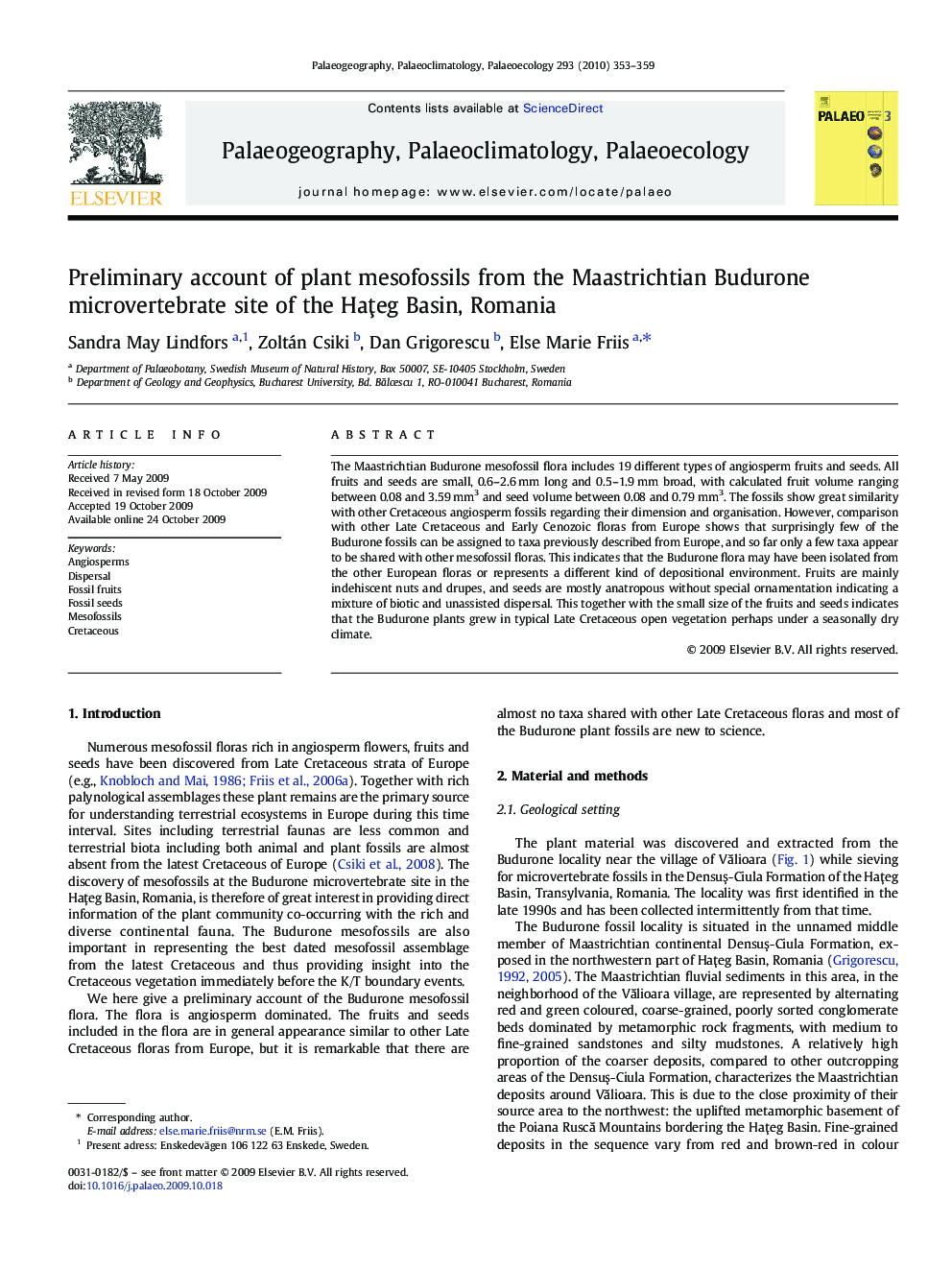| Article ID | Journal | Published Year | Pages | File Type |
|---|---|---|---|---|
| 4467729 | Palaeogeography, Palaeoclimatology, Palaeoecology | 2010 | 7 Pages |
The Maastrichtian Budurone mesofossil flora includes 19 different types of angiosperm fruits and seeds. All fruits and seeds are small, 0.6–2.6 mm long and 0.5–1.9 mm broad, with calculated fruit volume ranging between 0.08 and 3.59 mm3 and seed volume between 0.08 and 0.79 mm3. The fossils show great similarity with other Cretaceous angiosperm fossils regarding their dimension and organisation. However, comparison with other Late Cretaceous and Early Cenozoic floras from Europe shows that surprisingly few of the Budurone fossils can be assigned to taxa previously described from Europe, and so far only a few taxa appear to be shared with other mesofossil floras. This indicates that the Budurone flora may have been isolated from the other European floras or represents a different kind of depositional environment. Fruits are mainly indehiscent nuts and drupes, and seeds are mostly anatropous without special ornamentation indicating a mixture of biotic and unassisted dispersal. This together with the small size of the fruits and seeds indicates that the Budurone plants grew in typical Late Cretaceous open vegetation perhaps under a seasonally dry climate.
